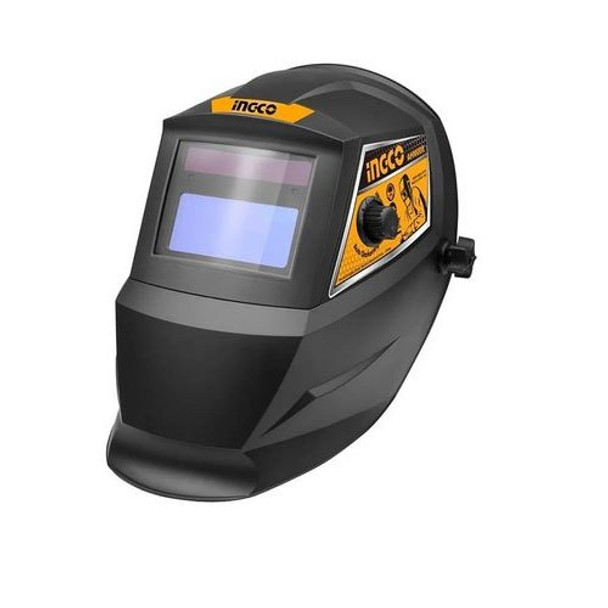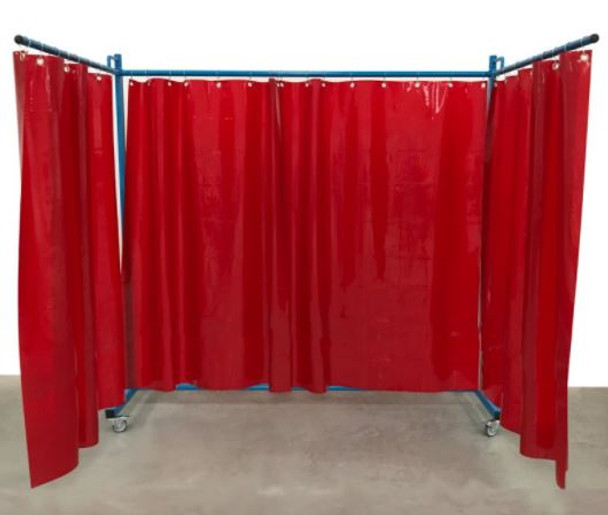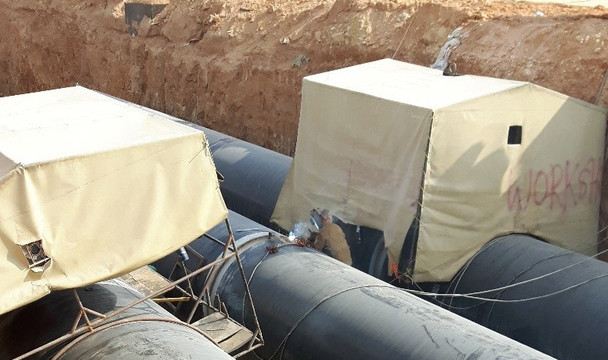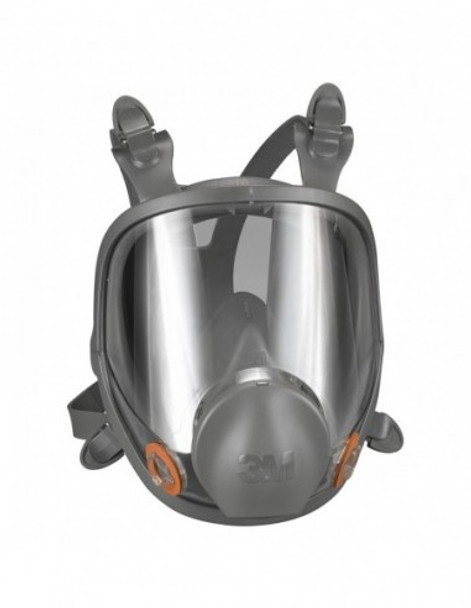How to Reduce Welding Fumes in the Workshop
Key Takeaway
- Utilize Proper Ventilation Systems: Implement Local Exhaust Ventilation (LEV) and general ventilation to capture fumes at the source and improve air quality throughout the workshop.
- Choose Low-Fume Processes and Consumables: Opt for welding techniques and consumables, such as TIG welding and low-fume electrodes, that naturally produce fewer fumes.
- Use Personal Protective Equipment (PPE): Equip welders with high-quality respirators or Powered Air-Purifying Respirators (PAPRs) to protect against harmful fume exposure.
Introduction
Managing welding fumes in a workshop environment is essential for maintaining worker health and safety. Welding fumes contain a range of hazardous substances, including metal oxides, gases, and particulates, which can pose serious health risks if inhaled over prolonged periods. These fumes can lead to both short-term effects like irritation, dizziness, and headaches, as well as long-term health complications, such as respiratory diseases and even cancer.
Reducing welding fumes in the workshop is vital for maintaining a safe, healthy environment for workers. Effective strategies include implementing proper ventilation systems—such as Local Exhaust Ventilation (LEV)—to capture fumes directly at the source, and using general ventilation to improve overall air quality. Selecting low-fume welding processes, like TIG welding, and consumables designed to emit fewer fumes can further reduce exposure.
Personal Protective Equipment (PPE), particularly respirators, plays a crucial role in protecting welders, especially when ventilation alone is insufficient. Additionally, organizing the workshop layout to improve airflow, conducting regular cleaning, and maintaining ventilation systems ensures contaminants don’t accumulate. For larger operations, advanced solutions like downdraft tables, air filtration units, and automation can provide further safeguards, supporting both worker health and regulatory compliance.
This guide will cover practical, effective strategies to minimize exposure to welding fumes and create a safer work environment.
Auto Darkening Welding Helmet AHM008 INGCO
Understanding Welding Fumes
1. Composition of Welding Fumes
Welding fumes are made up of tiny particles and gases generated when metal vapors condense in the air. These fumes often contain harmful elements such as manganese, hexavalent chromium, nickel, and lead, depending on the type of metal and welding technique used. Certain substances, like hexavalent chromium, are known carcinogens, while others can cause respiratory issues and neurological problems.
2. Health Risks Associated with Welding Fumes
Exposure to welding fumes can lead to various health issues. In the short term, inhaling fumes may cause eye, nose, and throat irritation, dizziness, and nausea. Long-term exposure has more severe implications, including chronic lung disease, asthma, and even lung cancer. Continuous exposure to fumes containing metals like manganese can also impact the nervous system, leading to symptoms similar to Parkinson's disease. Thus, it’s crucial to manage fumes effectively to protect welders’ health.
3. Regulations and Safety Standards
Regulatory bodies like OSHA (Occupational Safety and Health Administration) set permissible exposure limits (PELs) for welding fumes and toxic substances to safeguard workers. These standards require employers to monitor fume levels, implement ventilation systems, and provide personal protective equipment (PPE) to employees. Complying with these standards is essential for legal compliance and maintaining a safe workplace.
Key Strategies to Reduce Welding Fumes in the Workshop
Use Proper Ventilation Systems
Effective ventilation is one of the most important steps in minimizing welding fume exposure. There are two main types of ventilation: general and local exhaust ventilation (LEV).
1. General Ventilation: This includes natural ventilation, such as open windows or doors, and mechanical ventilation, like exhaust fans. While general ventilation helps reduce airborne contaminants, it is less effective than LEV at capturing fumes directly from the welding source.
2. Local Exhaust Ventilation (LEV): LEV systems are designed to capture fumes at the source, using extraction arms or hoods placed close to the welding arc. LEV systems are especially effective in confined spaces and can significantly reduce welders’ exposure to hazardous fumes. Regular maintenance of LEV systems, such as checking filters and ducts, ensures their continued efficiency.
3. Opt for Low-Fume Welding Processes and Consumables: The choice of welding process and consumables can also impact fume production. Certain welding methods and materials naturally generate fewer fumes.
4. Welding Processes: Some welding techniques produce fewer fumes than others. For instance, TIG (Tungsten Inert Gas) welding generally produces less fume than MIG (Metal Inert Gas) or stick welding, as it uses a non-consumable electrode and lower heat inputs. When possible, consider TIG welding to reduce fume exposure, especially for jobs requiring minimal fume output.
5. Low-Fume Consumables: Choosing low-fume consumables, such as specific filler materials and flux-cored wires, can also help minimize fume production. Many manufacturers now offer electrodes and filler metals designed to emit fewer fumes, reducing the overall amount of airborne contaminants. Selecting consumables based on low-emission characteristics can significantly improve air quality in the workshop.
Implement Personal Protective Equipment (PPE)
Personal protective equipment is crucial for safeguarding welders from welding fumes, especially in situations where fume exposure is unavoidable or when ventilation is insufficient.
1. Respirators: Welders should use respirators that are rated for welding fumes. Powered Air-Purifying Respirators (PAPRs) offer high-level protection by filtering out toxic particles before they are inhaled. PAPRs are often recommended for long welding shifts or environments with high fume levels.
2. Proper PPE Maintenance: It’s important to regularly inspect and replace filters on respirators to ensure they provide effective protection. Additionally, make sure that all PPE fits properly and is worn consistently to maximize safety.
WELDING CURTAINS
Optimize Workshop Layout and Workflow
1. Positioning Workstations: Placing welding workstations strategically within the workshop can improve airflow and reduce overall fume concentration. Position stations near exhaust systems or in open areas that allow fumes to dissipate rather than accumulate. Avoid confined spaces for welding, as these can lead to higher fume concentration.
2. Organize Tools and Materials: Cluttered work areas hinder ventilation and increase the risk of accidents. Ensure that tools, welding consumables, and other materials are organized and stored away from ventilation systems to avoid blocking airflow. A clean and organized workshop enhances both safety and air quality by allowing fumes to disperse efficiently.
3. Dedicated Welding Areas: If possible, set up designated welding zones equipped with specialized ventilation and extraction systems. By containing welding activities in specific areas, you can better control and monitor fume levels and prevent them from spreading throughout the workshop.
Regular Maintenance and Housekeeping
1. Clean Welding Surfaces: Dust, oil, paint, and other contaminants on workpieces contribute to increased fume production during welding. Ensure that metal surfaces are cleaned thoroughly before welding to reduce the presence of unnecessary fume-producing substances.
2. Maintain Ventilation Systems: Routine inspections and maintenance of ventilation systems, including LEV units and general exhaust fans, are essential. Replace filters regularly, clear any obstructions, and ensure that ducts and extraction arms are functioning properly to keep the air clean.
3. General Workshop Cleaning: Dust and particulates from welding fumes can settle on floors, walls, and other surfaces. Regular cleaning prevents the buildup of contaminants, which could become airborne again, especially when disturbed. Use industrial vacuums designed for dust collection to avoid stirring up settled particles.
Welding Tent- Portable
Advanced Techniques for Fume Reduction
Use of Downdraft Tables and Air Filtration Units
1. Downdraft Tables: Downdraft tables are equipped with built-in ventilation systems that pull fumes downward, capturing and filtering them before they escape into the surrounding air. They are particularly useful for smaller welding projects and individual workstations, as they effectively control fumes at the source and protect the welder.
2. Air Filtration Units: High-Efficiency Particulate Air (HEPA) filters and air purification units can improve overall air quality by removing fine particles and gases from the workshop environment. These units are beneficial in larger workshops, where general ventilation alone may be insufficient for capturing all contaminants.
Use of Welding Enclosures and Barriers
1. Welding Curtains and Barriers: Setting up portable welding curtains or barriers around welding areas helps contain fumes within designated zones. Curtains not only control fume spread but also protect other workers from exposure to the welding arc’s UV radiation. Proper spacing and ventilation within these enclosed areas are essential to maintain air quality.
2. Custom Welding Enclosures: For specific projects or high-fume processes, consider using custom enclosures with integrated ventilation systems. These enclosures can trap fumes while maintaining sufficient airflow, reducing exposure for nearby workers and preventing fumes from spreading throughout the workshop.
Automated and Robotic Welding Solutions
1. Automated Welding: Automation can significantly reduce worker exposure by removing the need for a human welder in fume-heavy processes. Automated welding systems and robotic arms perform repetitive welding tasks with precision and consistency, allowing workers to control the process from a safe distance.
2. Cost-Benefit of Robotics: Although automated welding solutions can involve high initial costs, they offer substantial long-term benefits, especially in high-volume manufacturing settings. Besides improving productivity, robotic welding systems also minimize the health risks associated with manual welding in fume-intensive environments.
Creating a Fume Reduction Plan for the Workshop
1. Assess Current Fume Levels: Conduct an initial assessment to determine the existing fume levels in various workshop areas. Using air quality monitoring equipment, identify high-risk zones that require more ventilation or PPE.
2. Set Fume Reduction Goals: Based on assessment results, set specific goals for reducing fume levels, such as increasing LEV units, upgrading PPE, or introducing downdraft tables. Establish timelines for implementing these changes to ensure consistent progress.
3. Assign Responsibilities: Delegate tasks for regular inspections, equipment maintenance, and PPE checks to designated staff members. Having a team responsible for these duties helps ensure compliance with safety protocols.
4. Conduct Training Sessions: Regular training on fume reduction practices and safe welding techniques is crucial. Ensure that all welders understand the importance of using ventilation, wearing PPE, and following workshop procedures to protect their health and maintain air quality.
6800 Full Face Piece – Medium
Frequently Asked Questions
1. What’s the most effective way to capture welding fumes?
Local Exhaust Ventilation (LEV) systems are one of the most effective methods, as they capture fumes directly at the source, preventing them from dispersing into the workshop.
2. How often should fume extraction systems be maintained?
Fume extraction systems should be checked regularly, ideally monthly, and undergo thorough maintenance, such as filter replacement and duct cleaning, at least every six months.
3. Are there welding processes that naturally produce fewer fumes?
Yes, TIG welding generally produces fewer fumes compared to MIG or stick welding due to lower heat input and the use of a non-consumable electrode.
4. What PPE is essential for working in a welding environment?
Respirators, ideally Powered Air-Purifying Respirators (PAPRs), are essential for protecting against inhaling fumes. Additionally, welders should wear protective clothing, gloves, and safety goggles.
5. How can I test for fume levels in the workshop?
Use air quality monitors to measure particulate levels in the workshop. Consulting with occupational health experts or using portable fume monitoring devices can help assess if additional ventilation is needed.
Related Articles
Conclusion
In conclusion, reducing welding fumes in the workshop is essential for protecting worker health, enhancing safety, and meeting regulatory standards. By implementing effective ventilation systems, using low-fume consumables, ensuring proper PPE, and maintaining a clean and organized workspace, you can significantly minimize fume exposure. Advanced techniques, such as downdraft tables, welding enclosures, and automation, further reduce fumes, particularly in high-production settings. Prioritizing these measures not only safeguards workers but also promotes a more productive and compliant workshop environment.
Reducing welding fumes is key to creating a safe and compliant workshop environment. For high-quality fume extraction systems, PPE, and other welding essentials, visit Tikweld Welding Supplies. Whether you need ventilated workstations or reliable personal protective gear, Tikweld has the solutions to keep your workshop safe and efficient.













